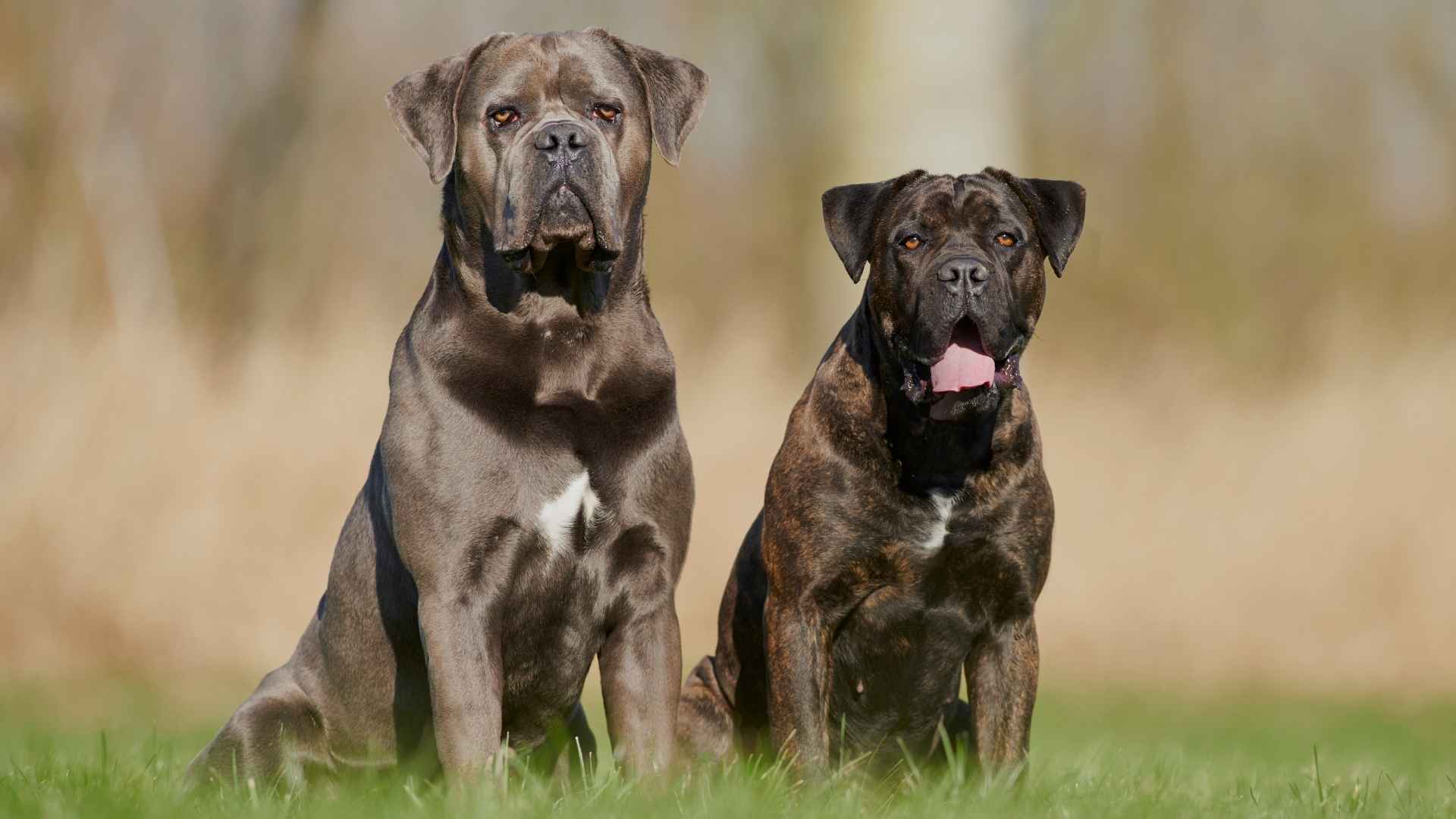Humans and dogs have shared a special bond for thousands of years, and the Romans were no exception. In ancient Rome, dogs weren’t just pets — they were protectors, companions, and even spiritual guardians. Whether guarding homes from evil spirits or standing alongside soldiers in battle, these loyal dogs played many important roles in Roman Britain’s history.
From everyday streets to the fierce Roman wars, dogs were both loved and sometimes overlooked, but always respected for their strength and loyalty. Interestingly, during Roman times in Britain, dogs were so valued that they were even exported to other regions.
Some experts believe that these Roman-era dogs in Britain were ancestors of beloved breeds we know today, like the English Mastiff and Bulldog. Join me as we dig into the fascinating world of Roman dog breeds — uncovering their history, roles, and how they shaped the dogs we adore now!
Roman Dog Breeds
1. Molossus
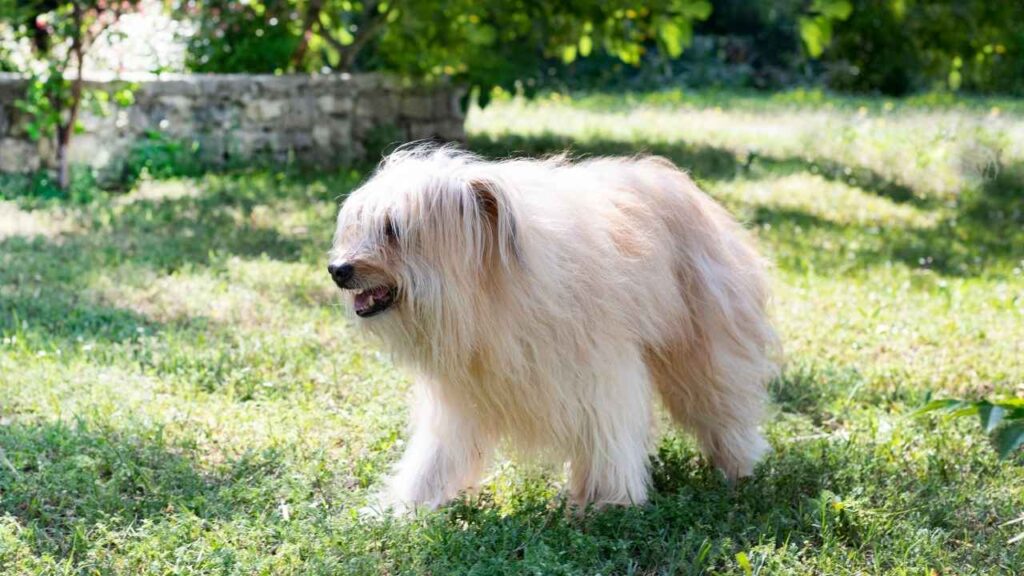
The Molossus was one of the most iconic dogs of the Greco-Roman era, widely regarded as the ancestor of many modern Mastiff-type breeds. Though extinct today, its legacy lives on through powerful breeds like the St. Bernard, Cane Corso, Rottweiler, Great Dane, Newfoundland, and even the Pit Bull.
Sometimes called a “Molosser or Molossian hound,” this ancient guardian remains a subject of fascination, with scholars still debating its exact form and function.
The breed originated in the rugged mountains of Epirus, present-day northwest Greece and southern Albania, where Molossian shepherds used them as livestock guardian dogs.
Some accounts describe the Molossus as a large, muscular war dog bred for battle, while others suggest a leaner, more agile type used for hunting and herding. It’s likely both forms existed, adapted for different roles across regions.
As Greek influence spread, so did the Molossus. The Romans adopted and refined the breed, employing these dogs to guard military camps, carry messages, and stand sentry in war zones. Sculptures like the Jennings Dog, now at the British Museum, reflect their imposing presence and noble character.
The Roman variant, often called Canis Pugnax, is believed to be the direct ancestor of the Neapolitan Mastiff. Though more athletic and taller than today’s version, it shared the same traits we admire in modern guardian breeds—loyalty, courage, and a natural instinct to protect.
2. Meliton
There’s something incredibly heartwarming about knowing that even the ancient Greeks and Romans loved their dogs, not just for work or hunting, but as cherished little companions.
One of the most adorable examples from antiquity is the Melitan, a small, fluffy dog that clearly captured the hearts of many. While not the only canine breed mentioned in ancient texts, this small dog is by far the most frequently depicted in both ancient Roman art and literature, according to Found In Antiquity.
Thanks to numerous surviving artifacts—vase paintings, grave reliefs, and terracotta figurines—we get a pretty vivid picture of what the Melitan looked like. This petite pup had a white, fluffy coat and spitz-like features, including a foxy, pointed muzzle.
One of the earliest depictions of the Melitan appears on an amphora from Vulci, with the dog’s name inscribed beside it—a rare and fascinating detail. Artworks consistently portray the Melitan as a small, lively dog with upright ears, a curled tail, and a confident stance.
Often featured on Chou pottery alongside playful children, the Melitan clearly held a cherished place in daily life, far more than just a lapdog.
3. Vertragus
The Vertragus was one of the most admired dog breeds of the ancient world, widely believed to be the ancestor of today’s Greyhound. Known for its grace, speed, and loyalty, this hound was highly valued not just as a hunter but as a noble companion.
Physically, the Vertragus had a long, lean frame, a pointed muzzle, large, soft ears, and expressive, dazzling eyes. Arrian, a Roman writer and dog enthusiast, described them as “splendid animals” with “fine eyes, fine bodies, fine coats, and fine appearance.”
While classical authors favoured specific markings, Arrian emphasized that coat colour was irrelevant—whether black, tan, or white, the breed’s excellence lay in its performance and temperament.
Unlike traditional scent hounds, the Vertragus hunted by sight—a revolutionary trait that allowed for swift, agile chases on open terrain, often alongside horseback riders. These dogs were perfectly suited for coursing, a Celtic sport where the focus was the thrill of the chase rather than the catch.
Far more than just a hunter, the Vertragus was deeply respected for its loyalty and skill.
4. Cane Corso
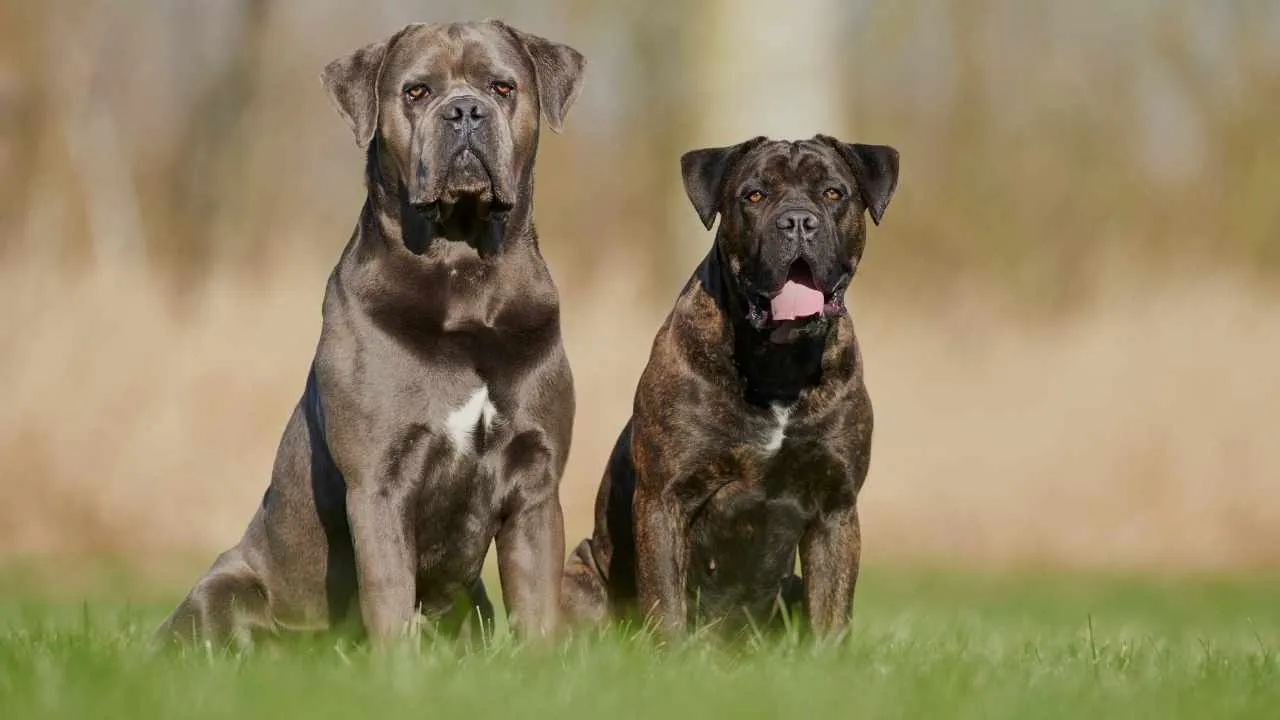
The Cane Corso is a majestic and powerful breed with deep roots tracing back to ancient Rome. Descended from the renowned Molossian war dogs of Epirus, this noble canine was once a fearless guardian on Roman battlefields.
Over the centuries, it evolved into a versatile farm dog in Italy, prized for guarding livestock, helping with herding, and even taking down large prey like wild boars and badgers. The breed’s name comes from the Latin word cohors, meaning “protector,” fitting for such a courageous and loyal companion.
The Cane Corso is a striking, muscular working dog standing 23–28 inches tall and weighing 90–110 pounds. It has a short, dense coat that comes in black, gray, fawn, red, or brindle. Ear cropping and tail docking occur in some regions but aren’t universal practices.
Nearly lost during the World Wars, the breed was revived in Italy in the 1970s. It reached the U.S. by 1988 and was officially recognized by the American Kennel Club’s Working Group in 2010.
Britannica states Cane Corsos are bold and protective, often reserved with strangers and cautious around other animals, especially of the same sex. They’re deeply loyal to their families but serious and independent, requiring experienced owners. With proper training, they excel as watchdogs and protection dogs but aren’t ideal for novices, young children, or seniors.
Thriving on purposeful work over casual play, Cane Corsos enjoy guarding, scent work, and agility, needing both physical and mental stimulation. For experienced owners they make loyal, trainable companions with the heart of a guardian and the soul of a warrior.
5. Neapolitan Mastiff
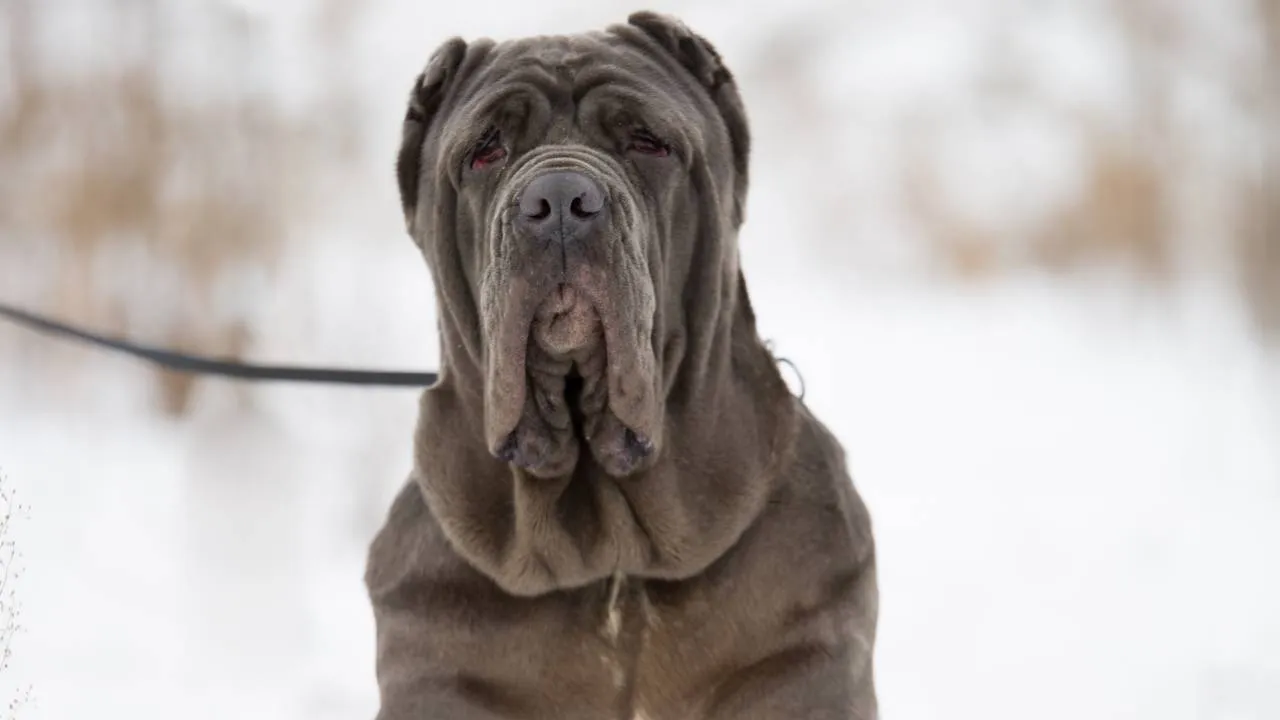
The Neapolitan Mastiff, or Mastino Napoletano, is a breed with a rich legacy dating back to the Roman Empire. Known today as devoted estate guardians in Italy, their ancestors—massive war dogs like the Molossus—were shaped by historical figures such as Alexander the Great, who crossed his war dogs with short-haired Indian dogs to help create this foundation.
Romans bred the Molossus with other large dogs to develop the Mastino, characterized by loose, protective skin and a powerful build. Southern Italian farmers later refined the breed to balance strength with family-friendly traits, resulting in the Neapolitan Mastiff named after Naples, where this evolution occurred, according to the AKC.
Originally bred to sit watch in courtyards and farmlands, these dogs were built for quick, powerful bursts of energy—just enough to deter (or catch) anyone foolish enough to cross into their territory. Whether guarding a flock or simply watching over their loved ones from the porch, the Neapolitan Mastiff is a steadfast and majestic presence.
By the mid-20th century, the breed became a national symbol. It was showcased at Naples’ first dog show in 1946, with the official breed standard established soon after. The Neapolitan Mastiff gained European popularity in the 1970s and joined the American Kennel Club’s Working Group in 2004.
Despite their formidable appearance—deep wrinkles, droopy jowls, and muscular frames—Neapolitan Mastiffs are gentle and loyal family companions. Built for powerful bursts of energy, they excel as calm protectors, perfectly suited to guard homes and loved ones with quiet strength.
6. Italian Greyhound
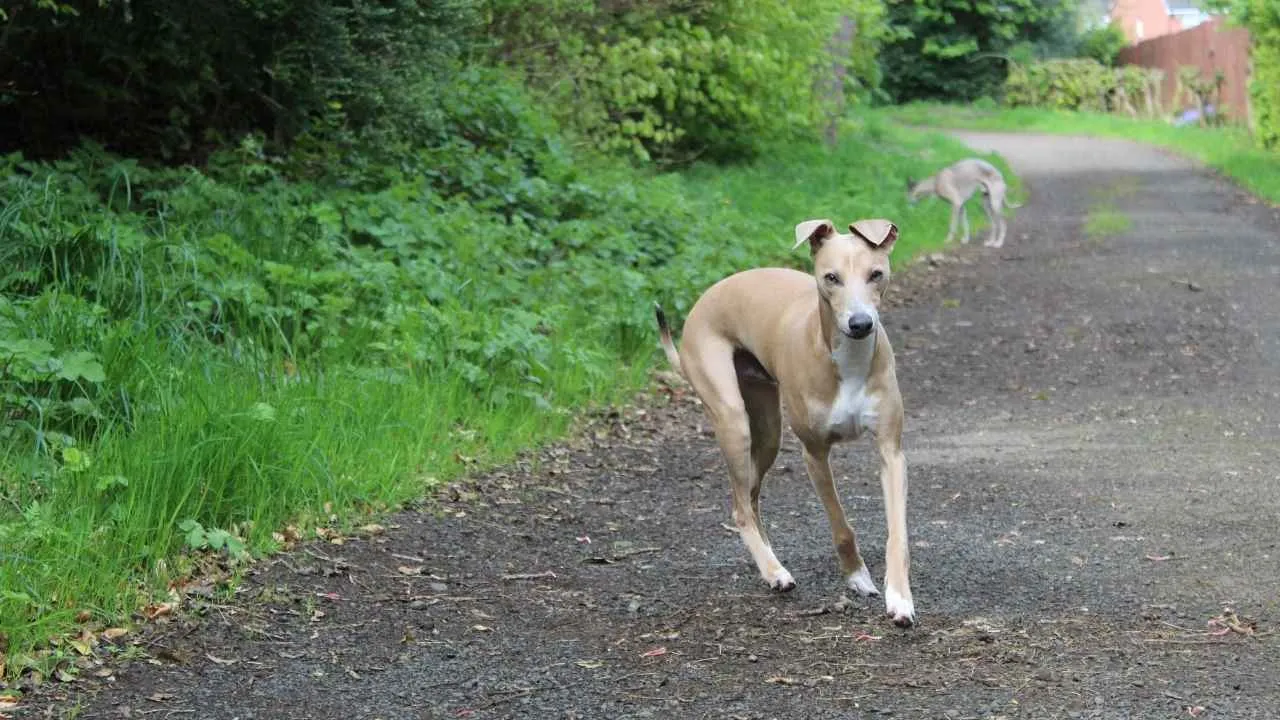
With their sleek curves and delicate build, Italian Greyhounds may appear fragile, but they’re spirited hunters and affectionate companions. Known as “Iggies” or “IGs,” this breed has charmed pet lovers for over 2,000 years. Though resembling a smaller Greyhound, they are a distinct breed developed through centuries of selective breeding.
Italian Greyhounds boast an ancient lineage, appearing in artwork and tombs from Egypt and the Roman Empire. Their elegant, S-curved silhouettes were admired even then. In 1626, Italian nobleman Francesco Birago praised their athleticism and companionship in his Treatise of Hunting.
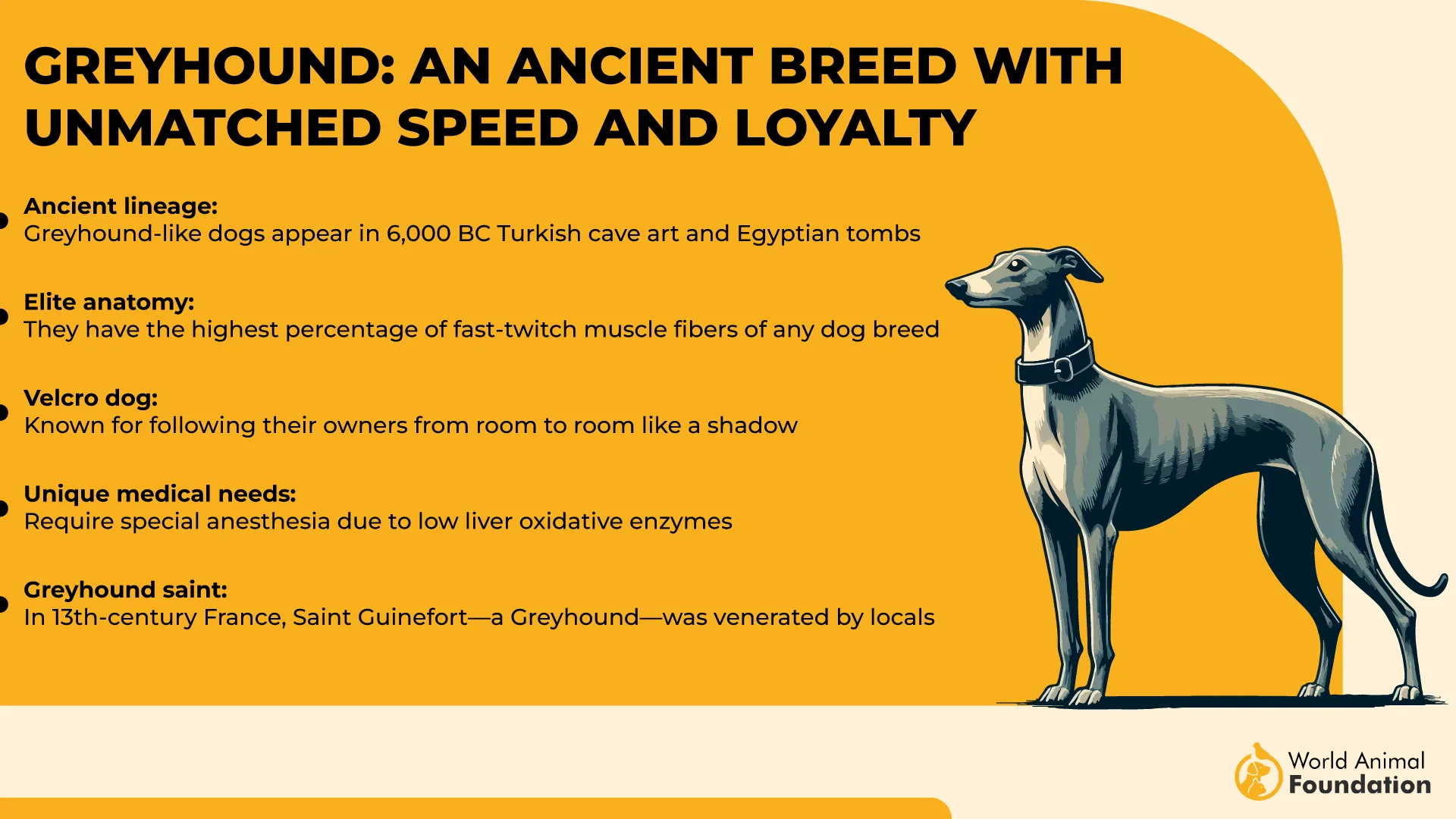
Standing 12.5–15 inches tall, IGs are lean and built for speed with long legs and a tucked abdomen. Their short, fine coat comes in various colours, is soft, and is easy to maintain, though they lack an undercoat.
With almond-shaped eyes and a narrow muzzle, they have a soulful expression. Their folded-back ears add to their refined, alert look. Despite their aristocratic appearance, IGs are loving and social dogs.
Gentle and loyal, Italian Greyhounds often bond closely with one person and need companionship to avoid anxiety. They are polite with strangers but may be shy if not well-socialized. Active and agile, IGs enjoy canine sports and playtime, thriving best when near their favorite humans.
7. Spartan Hound
The Laconian Hound, also known as the Spartan Hound or Castorian, was a legendary scent hound from ancient Greece’s Laconia region, home to Sparta. Celebrated for its speed, agility, and exceptional hunting skills, this breed stood out in classical antiquity.
Depicted in mosaics, coins, and pottery, the super-swift Laconian was praised by ancient writers for its keen nose and swift movement—traits that distinguished it from the larger Molossian dogs used in warfare and protection.
Medium-sized and athletic, similar to today’s Harrier, the Laconian had small, erect ears and a body more tucked-up than typical scenthounds but less so than sighthounds. Common colours included tan and white or black and tan. Known for boldness and high fertility, it was favoured by breeders of the time.
Greek historian Xenophon admired the breed for hare hunting, and some believe the modern Hellenic Hound shares its bloodline, reflecting similar colour, temperament, and hunting instinct.
The Laconian influenced other breeds, crossing with the Cretan Hound to produce the Metagon, praised by Roman poet Gratius. It likely also contributed to medieval European hounds through mixing with Celtic breeds like the Segusiae.
Though extinct, the Laconian Hound’s legacy endures in many hunting dogs that followed, symbolizing ancient canine excellence from Sparta to Europe’s forests.
Conclusion
Roman dog breeds served serious work, from fierce guard dogs protecting wealthy families, sheep, and cattle to swift hunters, or canis venaticus, pursuing wild beasts. These dogs appear in Roman copies of art and grave inscriptions, reflecting their vital role in the Roman army and daily life. Despite dangers from wolves and mighty bulls, they showed loyalty and strength.
From the affectionate little dog receiving a thousand kisses to the powerful canis pastoralis guarding flocks, Romans bred dogs for purpose and companionship. Many ancient breeds influenced modern ones, including German Shepherds and some British dogs. The famous Cave Canem warning and use of spiked collars highlight their protective nature.
Though centuries have passed since the century AD, the great glory exalts their legacy. Roman dogs, with their mix of deceptive graces and strength, laid the foundation for the diverse dog types we cherish today.


